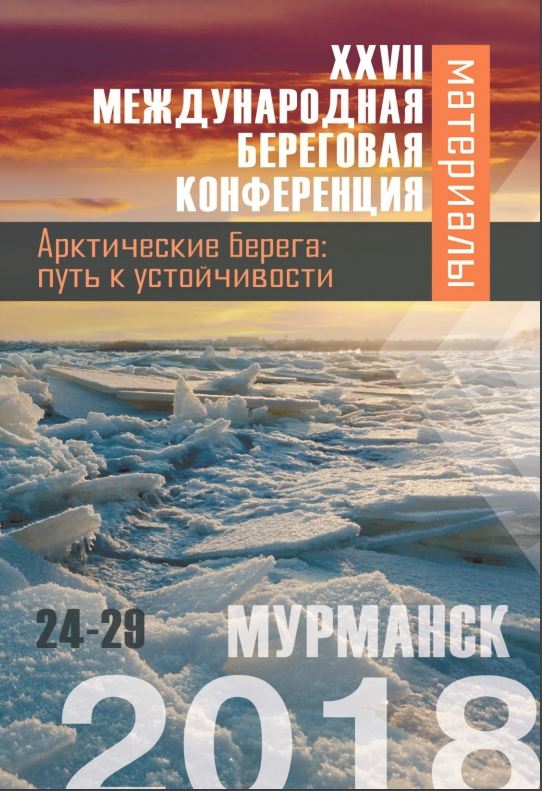Russian Federation
Russian Federation
Russian Federation
Russian Federation
Russian Federation
Russian Library and Bibliographic Classification 26
BISAC NAT010000 Ecology
BISAC NAT045050 Ecosystems & Habitats / Coastal Regions & Shorelines
BISAC NAT025000 Ecosystems & Habitats / Oceans & Seas
BISAC NAT045030 Ecosystems & Habitats / Polar Regions
BISAC SCI081000 Earth Sciences / Hydrology
BISAC SCI092000 Global Warming & Climate Change
BISAC SCI020000 Life Sciences / Ecology
BISAC SCI039000 Life Sciences / Marine Biology
BISAC SOC053000 Regional Studies
BISAC TEC060000 Marine & Naval
V rabote dano opisanie usovershenstvovannoy modeli Sankt-Peterburgskoy modeli evtrofikacii Baltiyskogo morya (SPBEM-2) za schet vklyucheniya uravneniy nekonservativnoy primesi dlya rastvorennogo organicheskogo azota i fosfora i rezul'taty modelirovaniya dlya akvatorii Finskogo zaliva Baltiyskogo morya dlya perioda s 2009 po 2014 gody. na Sopostavlenie rezul'tatov modelirovaniya s dannymi naturnyh nablyudeniy pokazalo, chto model' SPBEM-2 dostatochno horosho vosproizvodit mezhgodovuyu izmenchivost' biogeohimicheskih harakteristik ekosistemy zaliva.
Gulf of Finland, ecosystem, dissolved organic matter, model SPBEM-2
1. Eremina T.R., Karlin L.N. Sovremennye cherty gidrohimicheskih usloviy v vostochnoy chasti Finskogo zaliva. / Ekosistema estuariya reki Nevy: biologicheskoe raznoobrazie i ekologicheskie problemy. Pod red. A.F., S.M. Golubkova. Sankt-Peterburg-Moskva: Izd. Tovarischestvo nauchnyh izdaniy KMK, 2008. - S.24-38.
2. Deutsch, B., Alling, V., Humborg, C., Korth, F., Ḿrth, C.M. Tracing inputs of terrestrial high molecular weight dissolved organic matter within the Baltic Sea ecosystem // Biogeosciences. 2012. 9. P. 4465-4475.
3. Gaspar, P., Gregoris, Y., Lefevre, J.-M. A simple eddy kinetic energy model for simulations of the oceanic vertical mixing: Tests at station Papa and long-term upper ocean study site // Journal of Geophysical Research 1990. 95-C9. P. 179-193.
4. Gustafsson Erik, Savchuk Oleg P., Gustafsson Bo G., Muller-Karulis Barbel. Key processes in the coupled carbon, nitrogen, and phosphorus cycling of the Baltic Sea // Biogeochemistry. 2017. 134. P. 301-317.
5. Marshall J., Hill C., Perelman L., and Adcroft A. Hydrostatic, quasihydrostatic, and nonhydrostatic ocean modeling // J. Geophysical Res. 1997. 102(C3). P. 5733-5752. doi:https://doi.org/10.1029/96JC02776
6. Savchuk O.P. Nutrient biogeochemical cycles in the Gulf of Riga: scaling up field studies with a mathematical model // J. Mar. Sys. 2002. 32. P. 235-280.
7. Oleg P. Savchuk, Tatjana R. Eremina, Alexey V. Isaev, Ivan A. Neelov Response of eutrophication in the eastern Gulf of Finland to nutrient load reduction scenarios. 2009. Hydrobiologia, No 629, pp.225-237
8. Stevens D.P. On open boundary conditions for three dimensional primitive equation ocean circulation models // Geophys. Astrophys. Fl. Dyn. 1990. 51. P.103-133.
9. Zhang J., and Hibler W.D., III. On an efficient numerical method for modeling sea ice dynamics // J. Geophys. Res. 1997.102(C4) P. 8691-8702.






